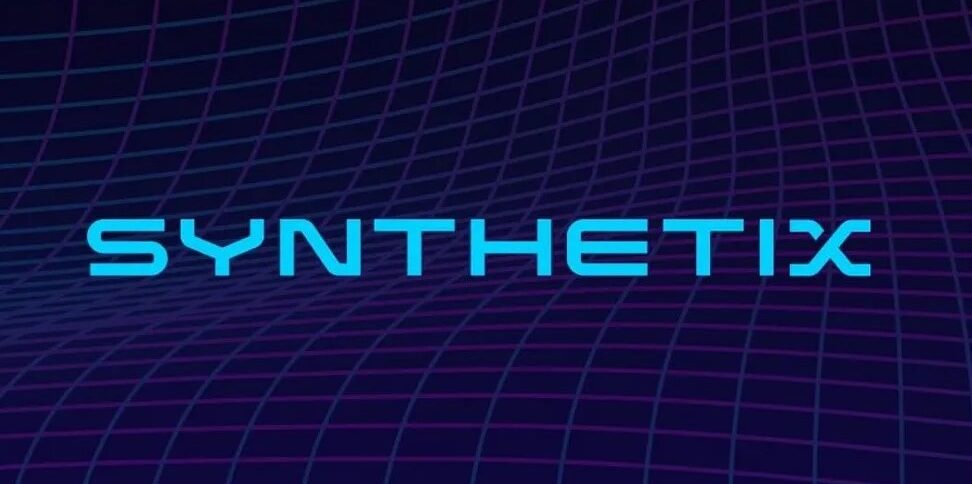
Introduction of Synthetix
Synthetix is a DeFi platform built on Ethereum, which offers synthetic assets. Their homeland is the Synthetix Network Token (SNX). To issue synthetic assets, the Synthetix SNX token must be locked into a contract. Synthetic assets represent real assets on the Synthetix Network and are known as synths. So what are the benefits of the contract model followed by Synthetix for providing synthetic assets? Well, it eliminates the need for partners to switch between synths.
Instead, all exchanges between synths happen via smart contracts. Another advantage of this model is that it solves the negative financial and crime issues that are common in the transition. Now, let’s talk about what synths are and what types of synths are available for purchase at Synthetix. As we said, synths mimic real-world properties at a price.
As for the assets available for trading on Synthetix, it can be virtually any asset. This is not limited to cryptocurrencies only. Currently, there are four types of assets available on Synthetix for trading. These are crypto, forex, stocks and commodities. At the time of writing, there are 36 crypto synths available for trading on Synthetix, including sBTC, sETH, sBNB, sLTC, sLINK, sETS, sXMR, and others.
When it comes to forex, Synthetix supports trading 7 synths including suUSD, sJPY, sEUR, etc. Users can trade three trades on Synthetix: sFTE, sNIKKEI and sTSLA.
Products available for purchase on Synthetix include sXAU, sXAG, sOIL and iOIL. Users also have the option to deposit their SNX tokens with Synthetix. In return, they receive a portion of the fees earned on the Synthetix platform as their contribution. This means that using SNX tokens, users can get a share of Synthetix’s revenue from its exchange. In addition, they also get the right to join the Synthetix network
History of Synthetix
A critical change has marked Synthetix’s history that ultimately defined its mission. The project now known as Synthetix actually started as Havven, a stablecoin project founded by Australian citizen Kain Warwick. Synthetix founder and Blueshyft CEO first introduced Havven with the goal of creating cryptocurrencies based on the Ethereum blockchain that records the performance of the US dollar and other fiat currencies.
Havven was created through an initial coin offering (ICO) in 2018 in which sixty million (60) Hav tokens were sold to realize approximately $30 million.

By the end of the same year, Havven was called Synthetix as we have it now, this includes the broad goal of creating a synthetic asset that records the price of global assets such as stocks, metals gold, fiat currency, etc.
Synthetix is considered one of the biggest projects in the DeFi market after its bottom line, SNX reached at least $180, locked in the protocol at the end of 2019. The founder of Synthetix is now looking to expand his focus further to include synthetic assets for major US assets such as Tesla and Apple.
How does Synthetix work?
Synths use decentralized oracles, which have intelligent price discovery principles based on price, to track the price of the underlying asset, allowing you to hold and trade Synths as if you owned the underlying asset. . In this way, Synths provide exposure to the rare assets of a crypto investor – gold and silver, for example – and allow you to trade quickly and efficiently. Synths are different from token products, such as Paxos’ PAX Gold (PAXG), which are backed by gold. Owning PAXG means you own the gold underlying the Paxos holdings, while owning Synthetix’s sXAU means you have no real value – you only have exposure to the price of gold.
Since synths are issued on Ethereum, you can deposit them on other DeFi platforms like Curve and Uniswap and use them to give money and get interest. Synthetics and synthetics are important in building mature markets – that is, markets that reach equilibrium – by supporting price discovery and helping to prevent volatility.
For example, if you expect that the value of your property will increase in the future, but are willing to accept the risk that the value of the property will not increase, you can buy a contract of choice. An option contract is an agreement between two parties that gives you, the buyer, the option to buy or sell an asset at a future date at a predetermined price.
In this way, if the value of the property does not increase, you can buy a contract that allows you to sell it at a certain price for a certain day. Let’s take a closer look at how Synthetix works. To start trading Synths, you can use two methods:
Buy ether (ETH) on the exchange
Exchange ETH for sUSD at Kwenta
Then trade for other synths, like sBTC
You can also:
Get the SNX token on the exchange
Add them to Mintr, a free dApp developed by Synthetix
Create synths and start trading them on Kwenta
At Synthetix, all Synths generated by staking the SNX token support a 600% support rate, which is determined by the local government. Those responsible for it will manage Mintr manually by pressing sUSD if it is high and burning sUSD if it is low.
When you pay SNX to mint sUSD, you receive a payment that reflects the amount of suUSD that will be burned to get rid of your SNX. This fee, which also represents part of all fees in Synthetix, is called suUSD and rises and falls depending on the input of Synths and their exchange rate.
For example, if half of Synthetix’s synths are synthetic ether (sETH) and the price of ether doubles, then the total cost and the cost of each participant will increase by a quarter. Since the full cost of the system is distributed in this way, the sellers act as “joint partners” in the business. This means you don’t need members when trading synths, but exchange them directly through smart contracts. This method reduces the risk of volatility and slippage, and ensures that there is enough money for trading.
When you redeem your tokens, you are eligible to receive two types of rewards if your support value is still at 600%: paid rewards, denominated in SNX, and exchange rewards from all Synth transactions, called and suUSD. The foreign exchange rate is allocated according to the debt issued by each participant. Linking the reward to the contract limit ensures that Synths are always well supported by the contract. If you want to withdraw your SNX tokens, you have to burn suUSD. And as the loan pool changes, you can burn more or less suUSD than what you originally gave.

